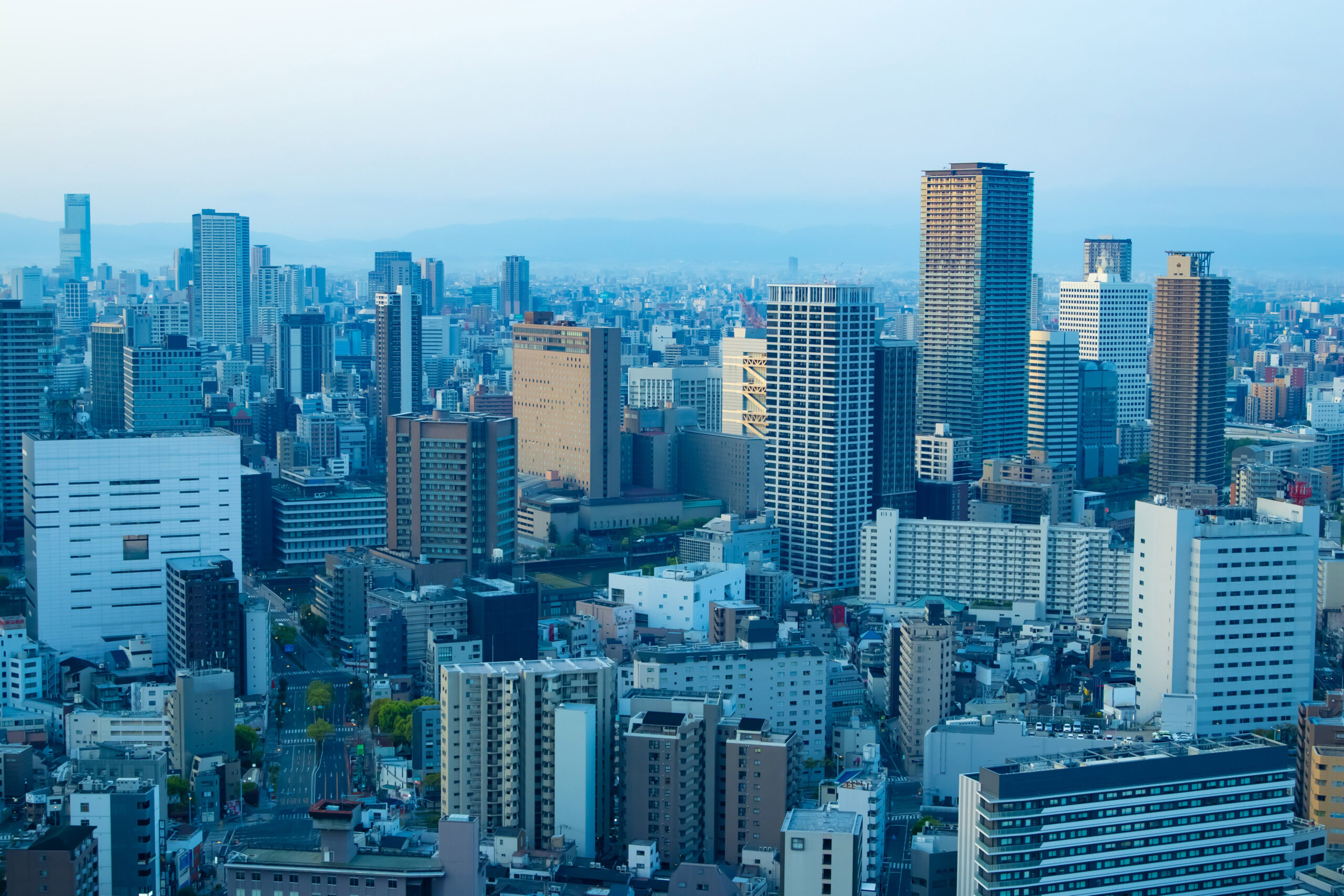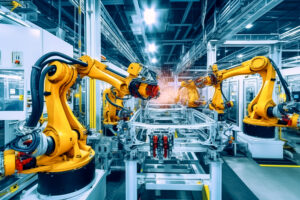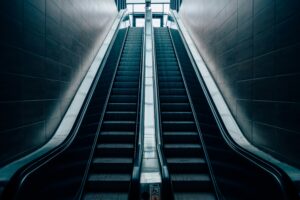Japan’s geographic location along the Pacific Ring of Fire puts it at a heightened risk for seismic activity. The nation has experienced some of the most devastating earthquakes in history, resulting in significant loss of life and economic impact. However, Japan’s response to these challenges has led to pioneering innovations in earthquake-resistant technology and strategies that serve as a model for resilience. This article explores the multifaceted approach Japan has taken to build resilience against earthquakes, focusing on innovations in architecture, the role of science and technology, government policies, and community engagement.
Understanding Japan’s Earthquake Challenges and Responses
Japan’s unique geological setting positions it as one of the most earthquake-prone countries in the world. The convergence of tectonic plates, particularly the Pacific Plate, Philippine Sea Plate, and the Eurasian Plate, creates a volatile environment. Over the years, the nation has faced catastrophic earthquakes, including the Great Kanto Earthquake of 1923 and the Great East Japan Earthquake of 2011, which caused massive destruction and loss of life. In response to these challenges, Japan has implemented a comprehensive strategy aimed at minimizing earthquake risk and enhancing public safety.
The initial response to seismic threats involved the establishment of building codes and regulations aimed at ensuring structural integrity. Over the decades, these codes have evolved to incorporate lessons learned from previous earthquakes. Additionally, Japan has invested heavily in disaster preparedness programs that include public education, early warning systems, and community drills. The government’s proactive stance has positioned Japan as a global leader in disaster risk management.
In the aftermath of major earthquakes, Japan has prioritized recovery and rebuilding efforts that emphasize resilience. This involves not only repairing damaged infrastructure but also rethinking urban planning and land use policies to mitigate future risks. Japan’s approach has shifted from a reactive model of disaster recovery to a proactive model of risk reduction, emphasizing the importance of preparedness before disaster strikes.
Furthermore, Japan’s cultural perceptions of nature and disaster have shaped its response strategies. The Japanese have a longstanding respect for the power of nature and an ingrained understanding that disasters are part of life. This cultural attitude fosters a community spirit that encourages collaboration in building resilience. It also motivates individuals to take personal responsibility for preparedness, leading to widespread participation in disaster drills and training.
As Japan continues to face seismic challenges, the nation remains committed to innovation and improvement in its earthquake response strategies. This commitment encompasses not only technological advancements but also the integration of community efforts and government policies to create a holistic approach to resilience. As the country navigates these challenges, its experiences provide invaluable lessons for other nations facing similar threats.
Lastly, Japan’s dedication to resilience is evident in its international collaborations and knowledge-sharing initiatives. The nation actively engages with other countries to share seismic research, architectural innovations, and disaster preparedness strategies. This global exchange of ideas and techniques reflects Japan’s understanding that building resilience is a collective effort that transcends borders.
Key Innovations in Earthquake-Resistant Architecture
Japan has made remarkable advancements in earthquake-resistant architecture, employing innovative techniques that have set global benchmarks. One of the leading innovations is the use of base isolation technology, which allows buildings to move independently of the ground motion during an earthquake. This technology involves placing a flexible bearing system between the building structure and its foundation, effectively absorbing seismic forces and minimizing structural damage.
In addition to base isolation, Japan has pioneered the use of dampers to reduce the lateral movement of buildings. These devices absorb and dissipate seismic energy, preventing excessive sway and helping to maintain the building’s structural integrity. Various types of dampers, including tuned mass dampers and viscous dampers, have been utilized effectively in high-rise buildings, significantly enhancing their resilience.
Another key innovation is the use of lightweight materials in construction. By reducing the overall weight of structures, engineers can lessen the impact of seismic forces. This approach is particularly important in the design of high-rise buildings, where weight becomes a critical factor in stability during an earthquake. The integration of advanced materials such as carbon fiber reinforced polymer has further enhanced the strength-to-weight ratio of buildings.
Moreover, Japan’s architectural innovations extend to sophisticated computer modeling and simulation techniques that allow engineers to predict how buildings will respond to seismic activity. These tools enable the design of structures that can withstand specific seismic conditions, ensuring a tailored approach to earthquake resilience. This predictive capability has significantly improved the safety of buildings and infrastructure across the country.
Architectural designs in Japan have also embraced flexibility, with structures now incorporating movable elements that can adjust to seismic activity. These dynamic systems not only enhance safety but also contribute to energy efficiency. This forward-thinking approach has led to the creation of buildings that are not only safe but also environmentally sustainable.
Finally, the integration of smart technology into earthquake-resistant architecture represents a significant leap forward. Smart sensors and real-time monitoring systems provide critical data that can be used to assess structural integrity during and after an earthquake. This immediate feedback allows for quicker decision-making in emergency situations, ultimately enhancing the safety and resilience of urban environments.
The Role of Science and Technology in Resilience
The intersection of science and technology has been instrumental in advancing Japan’s earthquake resilience. Research institutions and universities across the nation are deeply involved in seismic studies, exploring the complexities of earthquakes and their impacts on structures. This scientific inquiry has led to the development of innovative materials and construction techniques that prioritize safety in design.
One prominent area of research involves the analysis of soil behavior during seismic events. Understanding how different soil types react to ground motion has profound implications for construction practices. Engineers now utilize soil-structure interaction models to ensure that foundations are designed to accommodate specific ground conditions, reducing the likelihood of structural failure.
In the realm of materials science, Japan has been at the forefront of developing advanced construction materials that can withstand seismic forces. These include high-strength concrete and steel, as well as innovative composites that enhance the durability of structures. Ongoing research into the molecular properties of these materials continues to yield improvements that contribute to resilience.
Digital technology plays a critical role in enhancing earthquake preparedness and response. Geographic Information Systems (GIS) and remote sensing technology provide invaluable data for urban planning and risk assessment. By mapping seismic hazard areas and potential vulnerabilities, city planners can make informed decisions about land use and building codes, effectively reducing risks before disasters occur.
Furthermore, modeling and simulation technologies allow for the virtual testing of buildings under various seismic scenarios. This capability enables engineers to refine designs, identify potential weaknesses, and optimize structural performance. The ability to visualize and predict the impact of seismic forces on intricate designs is a game-changer in earthquake engineering.
Lastly, Japan’s investment in disaster response technology, such as early warning systems, has proven crucial in enhancing community resilience. These systems use seismic data to provide immediate alerts to citizens, allowing them to take protective actions. The integration of technology into everyday life ensures that individuals are informed and prepared when an earthquake strikes, further contributing to a culture of resilience.
Traditional vs. Modern Techniques: A Comparative Analysis
Japan’s architectural landscape reflects a rich historical tapestry woven from traditional and modern techniques designed to withstand earthquakes. Traditional Japanese buildings, characterized by wooden frames and flexible structures, have long demonstrated remarkable resilience to seismic forces. The use of materials such as timber, combined with intricate joinery techniques, allows these structures to sway rather than break during tremors.
In contrast, modern techniques have introduced advanced materials and engineering principles into earthquake-resistant design. Contemporary buildings often utilize steel and reinforced concrete, which offer greater strength and durability. This shift toward modern materials has led to taller buildings and more complex architectural forms, pushing the boundaries of what is possible in urban design.
While traditional techniques emphasize flexibility and adaptability, modern techniques focus on technological innovation and precision engineering. For instance, the traditional use of tatami mats and sliding doors allows for some degree of movement within a building, absorbing seismic forces. Modern innovations such as base isolation and energy dissipating systems aim to control and mitigate those very forces through sophisticated engineering solutions.
Despite the differences, there is a growing appreciation for how traditional techniques can inform modern design. The principles of flexibility and harmony with nature found in traditional Japanese architecture are increasingly being integrated into modern designs. This fusion of old and new acknowledges the value of cultural heritage while embracing technological advancements.
Another notable difference lies in community engagement and the cultural significance of traditional buildings. Many traditional structures are embedded within the cultural and historical identity of communities, fostering a sense of belonging and continuity. Modern buildings, while often architecturally striking, may lack this communal resonance, raising questions about their long-term acceptance and sustainability.
Ultimately, both traditional and modern techniques contribute to creating a comprehensive approach to earthquake resilience. While modern innovations push the envelope of structural engineering, the wisdom embedded in traditional practices offers invaluable insights into harmony, adaptability, and community engagement. The ongoing dialogue between these two approaches continues to shape the future of earthquake-resistant design in Japan.
Government Policies Supporting Earthquake Preparedness
Japan’s government plays a crucial role in supporting earthquake preparedness through a robust framework of policies and initiatives. Following major seismic disasters, the Japanese authorities have consistently updated and strengthened their disaster management strategies, focusing on proactive measures to mitigate risks. These policies encompass a wide range of areas, including infrastructure, building regulations, education, and community engagement.
One key policy initiative is the implementation of stringent building codes that require all new structures to meet high seismic standards. These codes are continuously revised to incorporate the latest research findings and technological advancements. The enforcement of these standards ensures that buildings are equipped to withstand seismic forces, significantly reducing potential damage during earthquakes.
In addition to building regulations, the Japanese government invests in public education campaigns designed to inform citizens about earthquake preparedness. These initiatives include information on how to respond during an earthquake, the importance of emergency kits, and participation in community drills. The government recognizes that well-informed citizens are better equipped to protect themselves and their communities during seismic events.
The creation of disaster management agencies at both the national and local levels further strengthens Japan’s earthquake preparedness framework. These agencies coordinate response efforts, conduct risk assessments, and facilitate training programs for emergency responders. Their proactive approach ensures that resources are allocated efficiently and that communities are prepared for potential disasters.
Financial incentives also play a vital role in supporting earthquake preparedness. The government offers subsidies and grants for retrofitting older buildings to meet modern seismic standards. This financial assistance encourages property owners to invest in enhancing the resilience of their structures, contributing to overall community safety.
Lastly, Japan’s government fosters collaboration between public and private sectors to enhance preparedness efforts. Partnerships with academic institutions, technology companies, and non-governmental organizations bolster research and development initiatives focused on earthquake resilience. This collaborative approach allows for the sharing of resources and expertise, further enhancing the nation’s ability to withstand future seismic events.
Community Engagement in Developing Resilience Strategies
Community engagement is a cornerstone of Japan’s approach to earthquake resilience, promoting collective responsibility and preparedness. Local communities play an integral role in developing and implementing resilience strategies that reflect their unique contexts and vulnerabilities. This grassroots involvement fosters a sense of ownership and empowerment among residents, making them active participants in their safety.
One of the primary ways communities engage in resilience efforts is through regular disaster drills and preparedness training. Local governments often organize these exercises, which involve simulations of earthquake scenarios and response protocols. Participation in these drills not only educates residents on proper emergency procedures but also strengthens community bonds, creating a network of support during times of crisis.
Additionally, community centers serve as hubs for disseminating information about earthquake preparedness. Workshops and seminars are held to educate residents about the risks associated with earthquakes and the steps they can take to mitigate those risks. These educational initiatives encourage individuals to create emergency plans and assemble disaster supply kits, further enhancing community readiness.
Culturally, Japan has a strong tradition of collective action in the face of disasters. Neighborhood associations and local organizations often collaborate to develop resilience strategies tailored to their specific needs. These grassroots initiatives empower residents to address their vulnerabilities and create plans that reflect their unique circumstances.
Furthermore, community engagement extends to the rebuilding process following an earthquake. Residents are involved in discussions about the design of new structures and public spaces, ensuring that their voices and preferences are considered. This participatory approach not only enhances the sense of community ownership but also leads to the creation of resilient environments that meet the needs of local populations.
Finally, the integration of technology into community engagement efforts has transformed the landscape of disaster preparedness. Mobile applications and online platforms allow residents to share information, report hazards, and communicate during emergencies. This connectivity strengthens community ties and ensures that residents remain informed and engaged in resilience efforts.
Case Studies: Successful Earthquake-Resistant Structures
Examining successful earthquake-resistant structures in Japan offers valuable insights into the effectiveness of innovative design and engineering. One notable example is the Tokyo Skytree, which stands as a testament to modern engineering prowess. Completed in 2012, the tower employs a unique base isolation system that allows it to sway gently during seismic events, minimizing structural stress and ensuring the safety of occupants.
Another remarkable structure is the Sendai Mediatheque, completed in 2001. The building’s design incorporates a series of columns that allow it to flex and adapt to seismic forces. Its transparent facade and open interior spaces highlight the innovative use of modern materials and design principles, making it not only a cultural landmark but also a resilient structure.
The NTT Docomo Yoyogi Building, with its iconic design, is another prime example of earthquake-resistant architecture. The building features a tuned mass damper system that absorbs and disperses seismic energy, allowing it to withstand significant shaking. This technology has proven effective in minimizing movement during earthquakes, ensuring the safety and comfort of those inside.
In addition to high-rise buildings, Japan’s earthquake-resistant innovations extend to critical infrastructure. The Akashi Kaikyō Bridge, which connects the islands of Honshu and Awaji, is a marvel of engineering that incorporates advanced seismic design. Completed in 1995, the bridge features a flexible design that allows it to sway with seismic activity, thereby preventing catastrophic failure.
Moreover, the Shimizu Corporation has developed the "Earthquake-Resistant House," which utilizes modular construction and advanced materials to create homes that can withstand seismic forces. These dwellings are designed with features such as reinforced walls and flexible foundations, ensuring safety and resilience for residents in earthquake-prone areas.
Lastly, the Tokyo Metropolitan Government Building is a prime example of how modern architecture can incorporate resilience features. The building’s design includes a double-skin facade that enhances energy efficiency and safety. Its base isolation system ensures stability during earthquakes, making it a model for future public buildings in Japan and beyond.
Lessons Learned from Past Earthquake Disasters
Japan’s history of devastating earthquakes has provided a wealth of lessons that have shaped the nation’s approach to disaster resilience. Each major seismic event has led to significant changes in building codes, disaster management strategies, and community preparedness initiatives. Reflecting on these lessons reveals the importance of ongoing adaptation and innovation in the face of evolving challenges.
The Great Kanto Earthquake of 1923 served as a pivotal moment in Japan’s disaster response history. The catastrophic loss of life and destruction prompted the government to establish stricter building regulations and invest in urban planning. This disaster highlighted the need for resilient infrastructure, leading to the implementation of modern engineering practices that continue to influence construction today.
Another significant event was the 1995 Great Hanshin Earthquake, which exposed vulnerabilities in existing preparedness measures. The disaster revealed gaps in emergency response coordination and public awareness. In its aftermath, Japan enhanced its disaster response framework and prioritized community engagement, ensuring that residents were better informed and prepared for future seismic events.
The Great East Japan Earthquake of 2011 brought additional lessons, particularly regarding the importance of early warning systems. The effectiveness of Japan’s seismic monitoring network allowed citizens to receive timely alerts, enabling them to take protective actions. The experience underscored the necessity of technological integration in disaster preparedness and response.
Moreover, Japan’s recent experiences have highlighted the critical importance of psychological preparedness. Disasters not only cause physical damage but also lead to mental health challenges for affected communities. Recognizing this, Japan has begun to incorporate mental health considerations into disaster response protocols, ensuring that individuals receive comprehensive support during recovery.
Lastly, international collaborations following major earthquakes have demonstrated the value of knowledge-sharing. Japan has actively participated in global initiatives, providing expertise in earthquake resilience and learning from other countries’ experiences. This exchange of information enhances global efforts to build resilient communities, fostering a collective response to shared challenges.
The Impact of Earthquake-Resistant Designs on Safety
The integration of earthquake-resistant designs has had a profound impact on safety in Japan, transforming the way structures respond to seismic activity. The advancements in engineering and architecture have led to significant reductions in both human casualties and property damage during earthquakes. This focus on safety has not only saved lives but also instilled a greater sense of security within communities.
One of the most significant impacts of earthquake-resistant designs is the enhanced safety of high-rise buildings. With tall structures increasingly becoming a staple of urban landscapes, the implementation of base isolation and damping systems has revolutionized the way these buildings withstand seismic forces. As a result, skyscrapers can now sway gracefully during earthquakes, minimizing the risk of collapse and protecting occupants.
Furthermore, the use of advanced materials has contributed to the resilience of residential buildings. Houses equipped with reinforced structures and flexible foundations are less likely to suffer severe damage during seismic events. This increased safety not only preserves property but also protects families and communities, fostering a culture of preparedness and resilience.
The psychological effects of earthquake-resistant designs are also noteworthy. When citizens feel safe in their surroundings, they are more likely to engage in community activities and invest in their neighborhoods. This sense of security can enhance social cohesion, as individuals come together to support and strengthen their communities in the face of potential disasters.
Moreover, the economic implications of earthquake-resistant designs are significant. By reducing the extent of damage during seismic events, these innovations save costs related to repairs, rebuilding, and emergency response. This financial stability allows communities to allocate resources toward other essential areas, such as education and healthcare, further contributing to overall resilience.
Lastly, the visibility of earthquake-resistant designs in urban environments serves as a constant reminder of the importance of preparedness. Iconic structures that incorporate advanced seismic technologies become symbols of resilience, inspiring communities to prioritize safety and engage in disaster risk reduction initiatives. This cultural shift toward valuing resilience is essential in building a safer future for all.
Future Trends in Earthquake-Resistant Innovations
As Japan continues to confront seismic challenges, the future of earthquake-resistant innovations appears promising. Ongoing advancements in technology, materials science, and engineering practices are likely to redefine the landscape of resilience in the coming years. These trends reflect a commitment to continually enhancing safety and minimizing risk in the face of natural disasters.
One of the most exciting trends is the integration of artificial intelligence (AI) and machine learning into seismic design and assessment. By analyzing vast amounts of data from previous earthquakes, these technologies can help engineers develop more accurate models of how structures will respond to seismic activity. This data-driven approach has the potential to revolutionize building design, leading to safer and more resilient structures.
Additionally, the development of smart materials is poised to reshape earthquake-resistant architecture. These materials can respond dynamically to environmental conditions, adapting their properties to enhance structural performance during seismic events. Innovations such as self-healing concrete and shape-memory alloys will further push the boundaries of what is possible in construction.
The concept of "urban resilience" is also gaining traction, emphasizing the need for cohesive strategies that encompass not only buildings but entire communities. This holistic approach recognizes that resilience involves social, economic, and environmental dimensions. Future innovations will likely focus on creating interconnected systems that enhance community preparedness and response capabilities.
Moreover, the growing awareness of climate change and its potential impact on seismic activity is driving research into sustainable resilience practices. This includes developing buildings that are not only earthquake-resistant but also energy-efficient and environmentally friendly. The intersection of sustainability and resilience offers new opportunities for innovation that benefit both people and the planet.
Finally, international collaboration and knowledge-sharing are expected to play an increasingly important role in advancing earthquake-resistant innovations. As countries around the world face similar seismic challenges, the exchange of best practices and technologies will foster a global community dedicated to improving resilience. Japan, with its rich history of innovation, will continue to be at the forefront of these efforts.
As these








